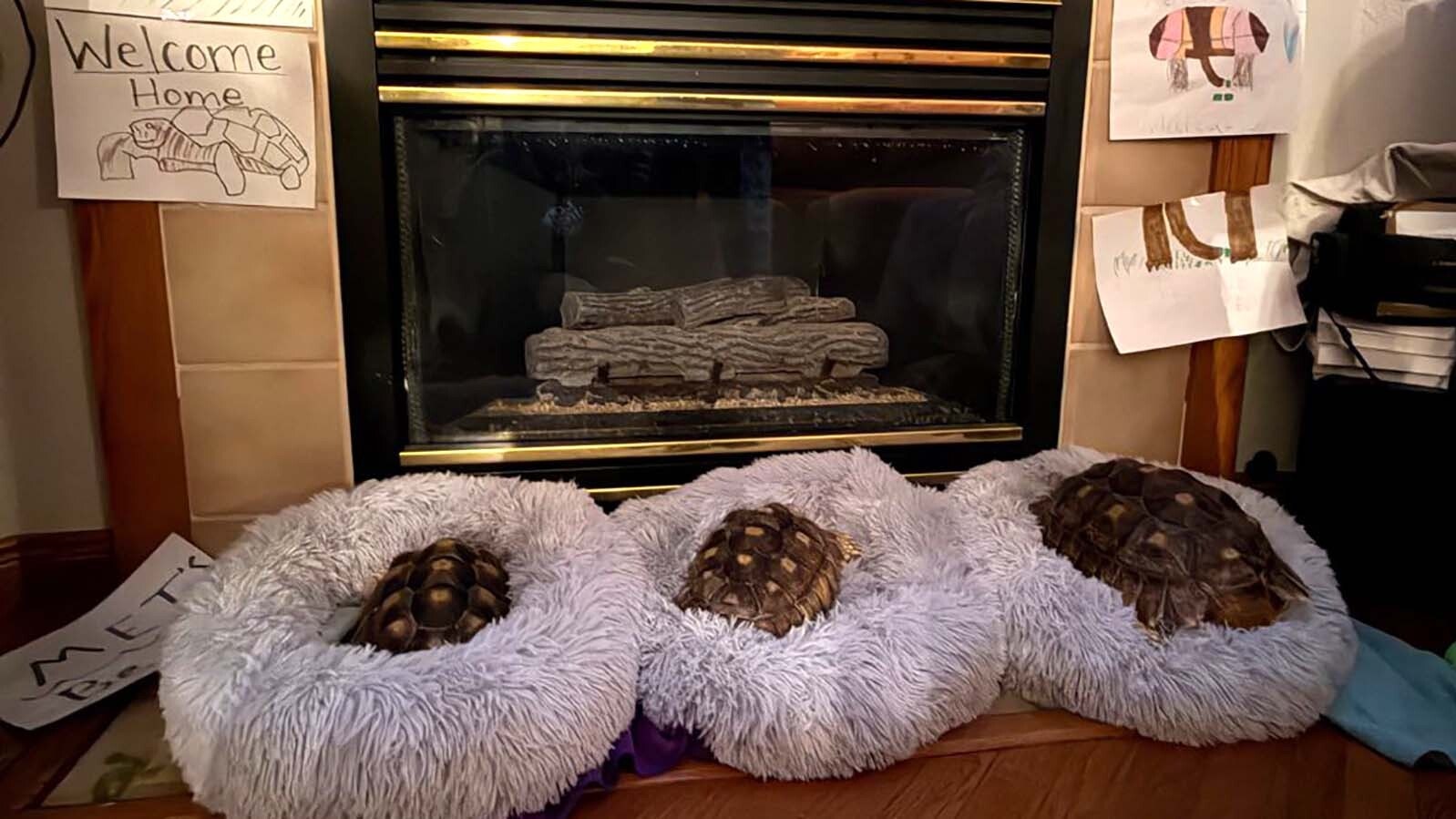How many bison can one high school eat?
"A bigger school like you might see in Bozeman, they can probably use two bison in a year,” figures KayAnn Miller, one of a growing number of indigenous food advocates in Montana and Wyoming.
At the Saint Labre School in Ashland, Montana, students help tend to a donated herd of bison that roam as living reminders of the animal’s central place across indigenous cultures — including recipes for buffalo stews and bison burgers.
In some places, the burgers come with a side of yucca fries — a crispy side dish made with the starchy root of a native plant.
“You can bake it, mash it, slice it and use it for chips,” said Miller.
Such alternatives to standard American fare are showing up in more restaurants, school lunchrooms and community kitchens, with bison often as the main course.
Miller said there are 124 Montana schools embracing indigenous foods. Tribal members from Fort Washakie attended a training in Hardin, she said, where the school system is all in on indigenous foods.
In addition to bison, these include “The Three Sisters — corn, beans, and squash,” said Miller.
“It's very common that you'll see a ‘Three Sisters’ something or other,” added Miller. “It could be a Three Sisters Stew and Three Sisters salad and a Three Sisters succotash.”
Miller, who is the co-executive director of the Montana Partnership to End Childhood Hunger, said groups like hers are hosting more indigenous food trainings, while more indigenous chefs are growing a new following for indigenous foods.
“Montana, Wyoming, a lot of the things we see moving onto the plate are elk, rabbit,” said Miller. “A lot of root vegetables, taro.”
With its brown, hairy exterior — sounds like a bison — taro is a purplish, starchy staple food in many cultures and is used in dishes like poi in Hawaii, as well as in soups.
Taro and bison are still seen as exotic and perhaps unwelcome additions to the tater-tots-and-fish-sticks world of school lunches.
Miller explained, “For producers who are already raising buffalo and schools that are interested in using it, the biggest headwinds that we would run into routinely is people don't understand the current USDA regulations around moving buffalo into school meals. They pretty much think it can't be done.”
“We’ve got to overcome that,” she said, noting how the USDA does allow schools to reinvent their food service with indigenous foods.
Indigikitchen
Chef Mariah Gladstone has become the go-to expert on getting bison into school lunches.
The founder and CEO of Indigikitchen, an online platform dedicated to revitalizing Indigenous foodways, Gladstone continues to help schools across Montana incorporate traditional Native foods into their meal programs.
"Somehow, I became the very niche ‘bison in school lunches’ person," Gladstone told Cowboy State Daily. "So, I regularly get tasked with figuring out various school lunches and how USDA credits the school lunches and all sorts of stuff like that."
A member of the Blackfeet Nation and enrolled member of the Cherokee Nation of Oklahoma, Gladstone was raised in northwest Montana near the Blackfeet Reservation.
She holds a degree in environmental engineering from Columbia University and a master's in environmental science from SUNY College of Environmental Science and Forestry.
In 2021, Indigikitchen received a grant through Montana No Kid Hungry to develop a comprehensive toolkit for food service directors.
The result was a resource that helps schools identify, procure, and incorporate traditional foods while navigating federal nutrition guidelines.
"The toolkit was created to help food service directors identify, procure, and successfully incorporate traditional, healthy foods into their breakfast and lunch programs," according to the document.
The updated version, created with the Montana Partnership to End Childhood Hunger, includes recent USDA crediting changes and profiles of schools successfully serving Indigenous foods.
It covers everything from proper procurement methods to standardized recipes for dishes like bison meatballs with tomato sauce and Three Sisters salad.
Health Benefits
“Food is medicine” stands out as a popular refrain among indigenous food advocates like Gladstone, who points to preliminary results from the Blackfeet Traditional Diet Study, where participants followed ancestral eating patterns for 100 days.
"And the people, yeah, they lost a lot of weight,” said Gladstone. “But also, A1C levels improved and cholesterol levels improved.”
Gladstone said she’s seeing places outside reservation communities move toward a more indigenous way of eating.
She shared a story about a food service director in Anaconda, Montana, who got a grant to buy buffalo from the Ted Turner Ranch.
"At the beginning, they’re like, ‘Eww buffalo?” observed Gladstone. “And now they're like, ‘Can we get another buffalo? And those kids ate so much buffalo meat over the last year. They’re eating all sorts of cool things.”
They did kabobs, stir frys and a Korean buffalo bulgogi.
“And that’s the kind of stuff I do all the time,” said Gladstone. “And the kids are getting that connection to the food in a way — especially in cattle country, where some of those kids are from ranching families — and suddenly, they’re really into buffalo.”
Growing Trend
A couple of upcoming events showcase how the “eat more buffalo” and indigenous foods movement is rising in Wyoming.
A culinary experience titled "An Evening with Chef Anthony Warrior: Celebrating Indigenous Cuisine and Culture" comes to the Buffalo Bill Center of the West in Cody on Saturday.
Then on June 22, a traditional bison harvest event is scheduled for near Rapid City, South Dakota, as part of the Regional Buffalo to Schools Conference.
The harvest will take place at the 777 Ranch south of Rapid City and is organized in collaboration with the Intertribal Buffalo Council and several tribal and conservation organizations.
It’s billed as hands-on harvest and intended for school food service professionals, administrators, teachers, tribal herd managers, ranchers and processors.
The event will provide participants with practical experience in buffalo harvest and processing, including how to make the most of the entire animal, including organ meat.
Potential recipes include gluten-free breaded bison pancreas and bison heart with bacon.
David Madison can be reached at david@cowboystatedaily.com.









